Puffin Farm: A Mom-and-Pop Grow Op
My trip to Puffin Farm started out very much like many of my visits to Washington State. I landed at Sea-Tac on a cold, drizzly morning and was met at the airport by my nephew-in-law. But this time, instead of heading into Seattle, we drove two-plus hours in the rain to my niece’s pot farm.
My niece, Jade Stefano, had invited me to stay with her and her husband, Ben Short, at their farm in Ellensburg to photograph the annual harvest, something I had wanted to do ever since they started the farm in 2014. On this trip, the plan was for me to be completely entrenched at the estate for the duration of the harvest. Additionally, I would make several field trips to Puffin’s processing facilities in Seattle.
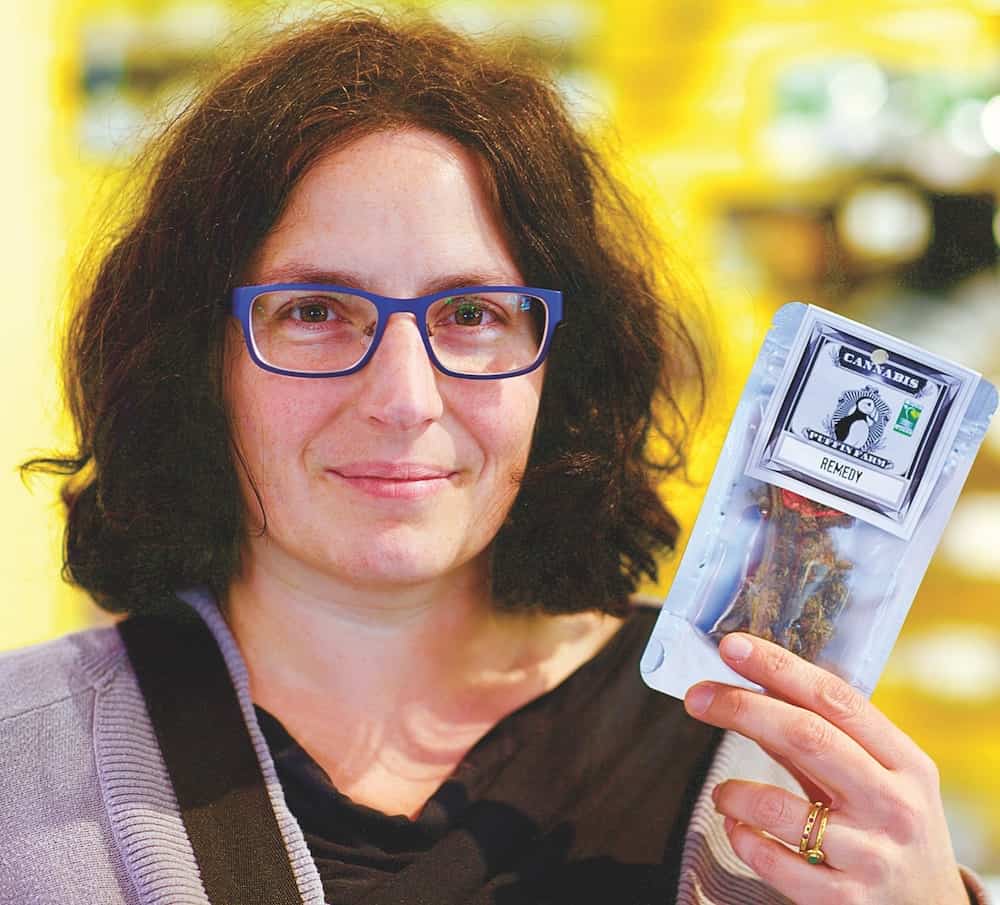
Jade Stefano holds a package of Remedy, one of Puffin Farm’s most popular medical CBD strains; David Goodman/ High Times
As we drove farther from the city, we passed through some of the most beautiful countryside I have ever seen, with gorgeous rolling hills, streams and lush foliage. We arrived in the early afternoon at the farm, which is situated right alongside the Yakima River. As we approached, I couldn’t actually see any cannabis; the only thing visible was an eight-foot fence surrounding the entire grow area, which is mandated by state law to block the view of the plants from outside. We parked and I grabbed my camera bag and went right into the growing field, as the harvest was already in progress.
The first thing I noticed when entering the Puffin Farm’s grow area was the intense floral fragrance of many different varieties of living, breathing cannabis plants all coming together to make a heady aroma that instantly perked up my senses. I arrived just a day after the harvest began, and the Puffin staff was fully into the swing of it. The farmworkers were set up in pairs, one person holding a plant and the other cutting it at the base with a lopper.
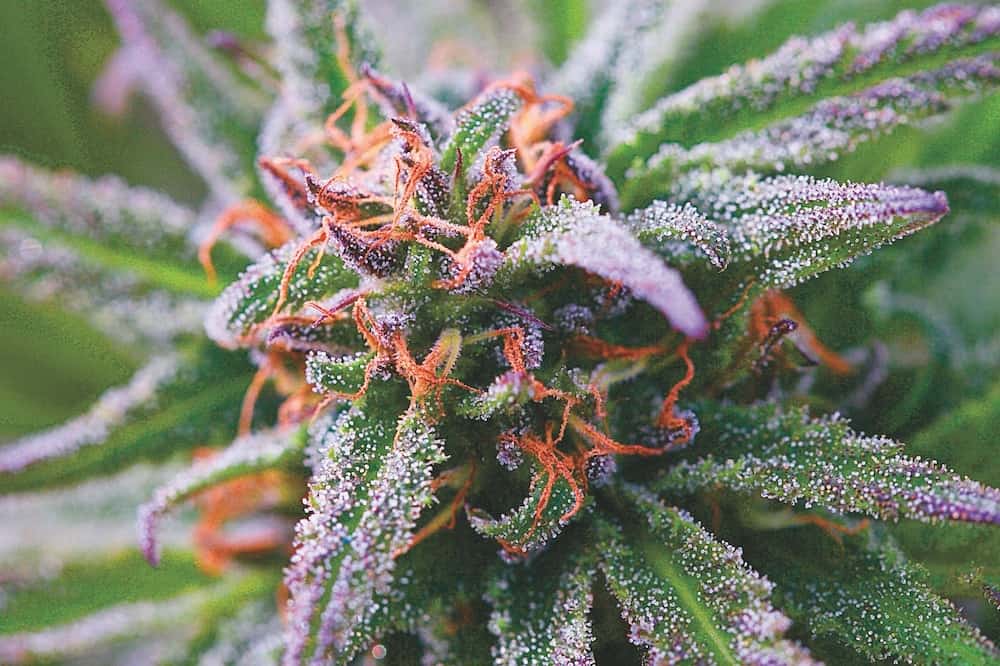
Afghani Kush 47 is ready to harvest; David Goodman/ High Times
Several other workers lined up to fill their wheelbarrows with the freshly cut plants, then wheeled their loads directly to the drying rooms to be weighed, catalogued, and hung upside down; they’d then head right back out to the field for more. Stefano and Short were giving an interview and photo session in the middle of the field with Northwest Leaf, a regional cannabis-industry publication. Over these past few years, the pair have emerged as two of the most sought-after experts in sustainable cannabis farming. They claim it was their destiny.
If Puffin Farm looks like a classic mom-and-pop enterprise, you couldn’t find a couple more perfectly suited to this situation than Stefano and Short. Short’s organic-farming expertise started with his studying sustainable agriculture at Evergreen College, while Stefano’s a naturopathic physician with a doctorate from Bastyr University. Together, they practiced their organic-farming techniques growing gourmet mushrooms in California in the early 2000s.
I asked Stefano how she got into pot farming. “We’ve always loved cannabis and started growing it as soon as we were able,” she said. “When cannabis was legalized in Washington State, we were already growing it medically. We realized we couldn’t live in Washington and have this historic thing happen and just watch it go by and not be a part of it, so it was either move forward with the new system or just stop doing it and be left behind. So we just decided to go for it.”
And since launching in 2014, Puffin Farm has developed a reputation for producing the finest organically grown cannabis utilizing very strict standards of sustainable farming. Short runs the farm and is the head grower, while Stefano is the CEO and heads up operations management and product development. Their simple philosophy is to produce the most organically pure flower possible.
Stefano explained: “We want to grow cannabis that we actually want to smoke! We’re super-picky and we want everything to be organic and natural with no chemicals.” “And not just organic,” Short added, “but we grow vegetarian organic, meaning we avoid products derived from factory-farmed animals such as bonemeal, blood meal or fish meal. All these things are commonly used organic fertilizers, but we don’t use them.”
Instead, Stefano and Short chose to use organic inputs like biochar, rock dust, bat guano and worm castings. The duo has found that over time this has created what they call a “living soil.” Stefano elaborated: “Our soil is a sandy loam river-bottom soil, so we’re starting out with the best type of soil you can get. And we have supplemented it over the last four years with bio char, truckloads of worm castings, alfalfa and guanos. We make aerated compost tea to increase the biodiversity in the soil and help make nutrients available, so less fertilizer is needed. All these things help create and maintain a healthy microbiome, and a living, biologically active soil is what makes for healthy and happy plants.”
Stefano and Short said they started out with 1 percent organic matter three years ago, and now they’re up to almost 5 percent organic matter—and it’s just going to keep growing from there. “We’re building the soil,” Stefano said. “We’re not eroding it the way most conventional farms do. This is important not only for the long-term productivity of the farm, but also to help in the battle against climate change.”
Stefano explained: “Increased organic matter in soil serves as a carbon sink, which keeps carbon stable and sequestered in the soil instead of releasing it into the atmosphere as CO2. Organic farms that increase carbon in their soil can get closer to a carbon-negative status and actually offset a good deal of their carbon emissions generated by electricity and fuel use. That’s a really important principle in our farming technique: building soil and nurturing soil and growing soil. By feeding your soil, you are feeding your plants, And that’s what it’s all about.”
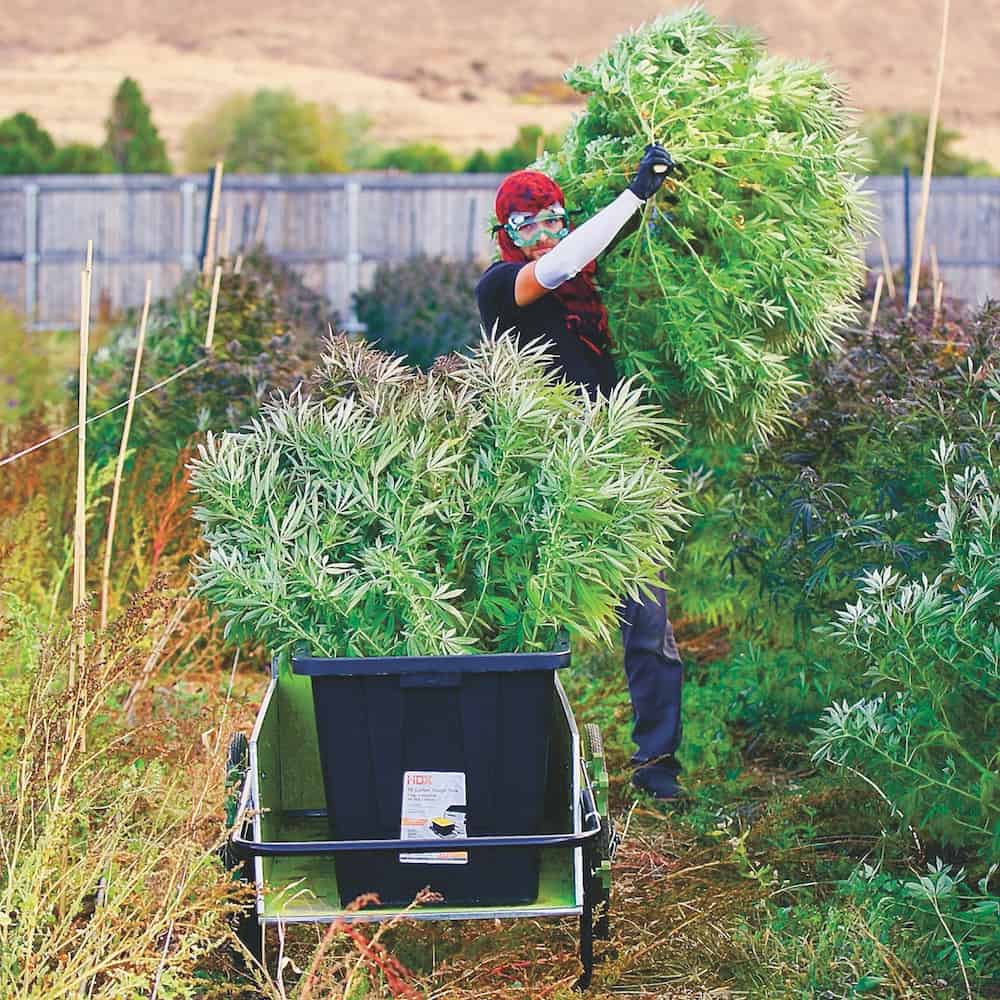
Puffin farmer Jeremy Haines loading up his wheelbarrow; David Goodman/ High Times
Out vs. In
When the subject of indoor hydroponic growing came up, Stefano expressed a very strong philosophy. “This is really important, and it’s becoming more and more of an issue,” she said. “Marijuana was illegal for many years—since 1937. And due to that, people couldn’t grow cannabis out in the open, so where did they grow it? In the basement, or in a closet, because that’s the only place that they could hide it. To do that, they had to use artificial lights, and they developed some really good techniques to get really strong, flavorful cannabis that looked great and had high yields.”
But cannabis is a plant and it loves sunshine, nature and soil, and it thrives outdoors. Stefano told me that when cannabis is grown outside correctly, it produces very high-grade terpenes and cannabinoid-rich flowers. “Now that it’s legal in many states, it doesn’t have to be grown indoors anymore,” she said. “But because of the history, many people learned how to grow indoors and they got very good at it, and they didn’t want to take the risk to go outdoors.”
And, according to Stefano, it’s a misconception that outdoor cultivation comes with higher risks and big unknowns. The fears of pests and inclement weather damaging crops have kept many growers cultivating indoors in factory warehouses. And growing in these indoor facilities comes with a great cost. “In Washington, there are 30,000-square-foot factories that are using hundreds of thousands of watts of electricity, and the carbon footprint is obscenely high,” Stefano said. It’s been estimated 1 percent of the country’s grid power is being used to grow cannabis—and the percentage in Washington State is even higher.
“Cannabis is a plant that thrives when grown outside in the right environment!” Stefano said. “It produces an amazing array terpenes and flavors and beautiful flowers. It’s happy and healthy, and you don’t need pesticides because nature provides you with a natural protective system.” Natural predators feast on insects, she said, and the wind provides airflow and prevents fungus from attacking the crop.
Indoor growers, on the other hand, have to meticulously control the environment to prevent fungal infections from taking hold, and insect populations can explode without natural predators around to devour them. This can often lead to the widespread and sometimes illegal use of chemical pesticides.
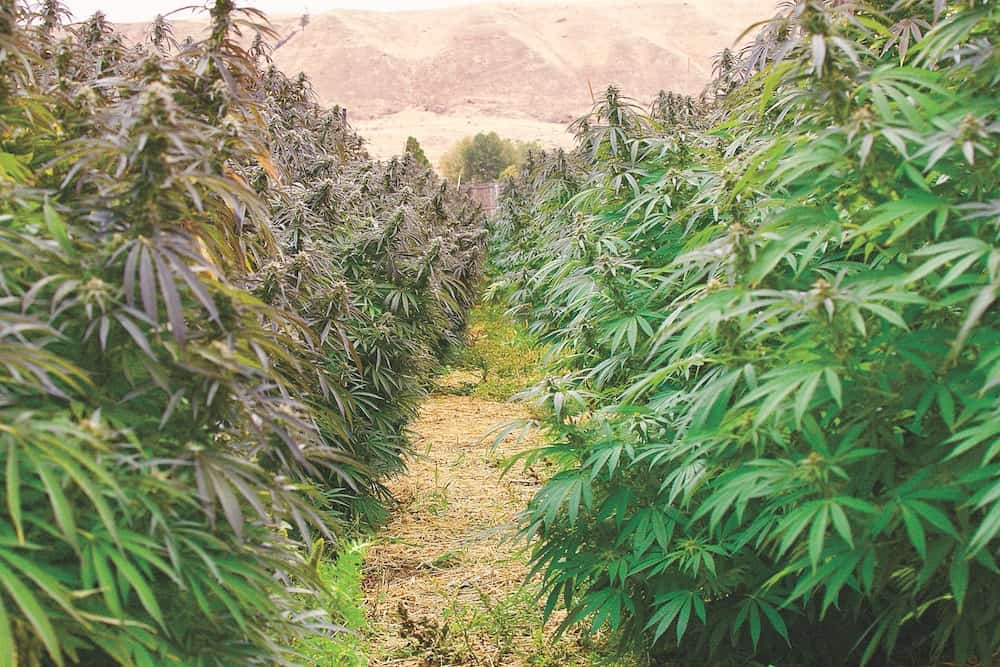
A row of Dancehall (left), a CBD-rich medical strain, growing right alongside a row of Death Star, a THC-rich recreational strain; David Goodman/ High Times
Terroir, Terroir, Terroir
Stefano and Short also attribute the high quality of their weed to the very first decision they made when they decided to start Puffin Farm: its Yakima River location. “Terroir is a really important concept that people are just starting to consider when it comes to cannabis. It’s what gives wines produced on different estates from the same genetic stock their unique characteristics,” Stefano said. “Terroir is a combination of all the environmental factors that contribute to a crop. It includes things such as elevation, air quality, the UV light that comes to your location, geography, local microclimate, soil characteristics, mineral composition and cultivation practices.
“If you’re next to a river or if there are hills by the farm, that will affect the final character of your crop,” Stefano continues. “Terroir affects what flavors are expressed, the concentrations of cannabinoids and, to some extent, the ratios. We have a stellar terroir that includes a dry, hot summer, a good elevation and river frontage. We get a lot of wind, which is a battle sometimes, but it certainly adds something to the phenotypic expression we see in our crop. We have a great terroir here in Ellensburg, and it is definitely helping to create aromatic and tasty flower.”
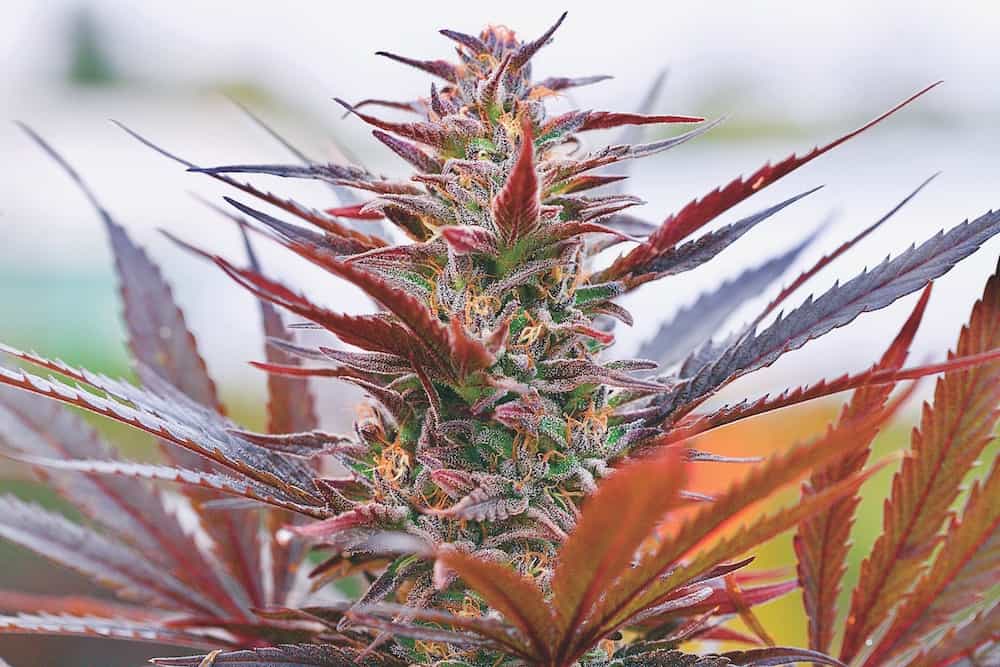
Puffin Purple: Afghani x G-13 x Seattle Purple (75% Indica/ 25% Sativa). Flowering time: 9-10 weeks. 17.1% THC, 0.23% CBD; David Goodman/ High Times
Organic Equivalency
Although most everything Stefano and Short do on the farm is “organic,” Washington State has no official organic designation for cannabis. As a matter of fact, farms are not actually allowed to call their weed organic regardless of farming practices. “Washington State has explicitly created rules that say you cannot call your cannabis organic,” said Stefano. Nevertheless, she adds, “We grow to organic standards using organically certified amendments. We’ve chosen the Clean Green Certified [Program], which is the largest cannabis organic-equivalent certifier in the country, to vet our farm’s practices. They inspect our farm and look at all the amendments. They take samples for pesticide testing, and make sure there are no synthetic chemicals being used. We believe in the importance of third-party certification because on the market you’ll see many products claiming to be pesticide-free and organic, but there’s nobody verifying that.”

During the harvest season, the greenhouses are converted into huge drying rooms; David Goodman/ High Times
The Post-Harvest Cure
As rigid as Stefano and Short’s approach is to pure organic farming, so is their methodology in post-processing. “Growing terpene-rich, cannabinoid-rich plants is one thing—and that takes a lot of effort and the use of the right ingredients—but there’s all kinds of ways that stuff can go wrong after harvest, so we take post-harvest care and processing very seriously,” Stefano said.
At Puffin Farm, the plants are harvested at their peak, and are quickly brought into climate-controlled rooms in which they’re hung upside down with most of their fan leaves and stalks intact. The leaves protect the fragile trichomes from damage as the plants are slowly dried for 14-18 days at a temperature of 70°F or less.
After drying, the curing process begins, which can take anywhere from one to six months, depending on the strain. “Some strains reach their peak after six months or more of proper curing,” Stefano said. “We have cannabis from last year. It’s over a year old and it still smells and tastes amazing, and in fact is better than it was a month after harvest. Its flavor becomes smoother and more mature the way a fine wine would. So curing and storage are really important, and temperature and humidity must be carefully controlled.”
The cannabis is stored throughout the year in climate-controlled rooms, between 50° and 60°F. With time, flavors improve, the product becomes smoother and terpenes are maintained. “It’s like wine in that it will degrade with excess heat and light,” Stefano said. “It needs to be handled with care and conscientiousness.”
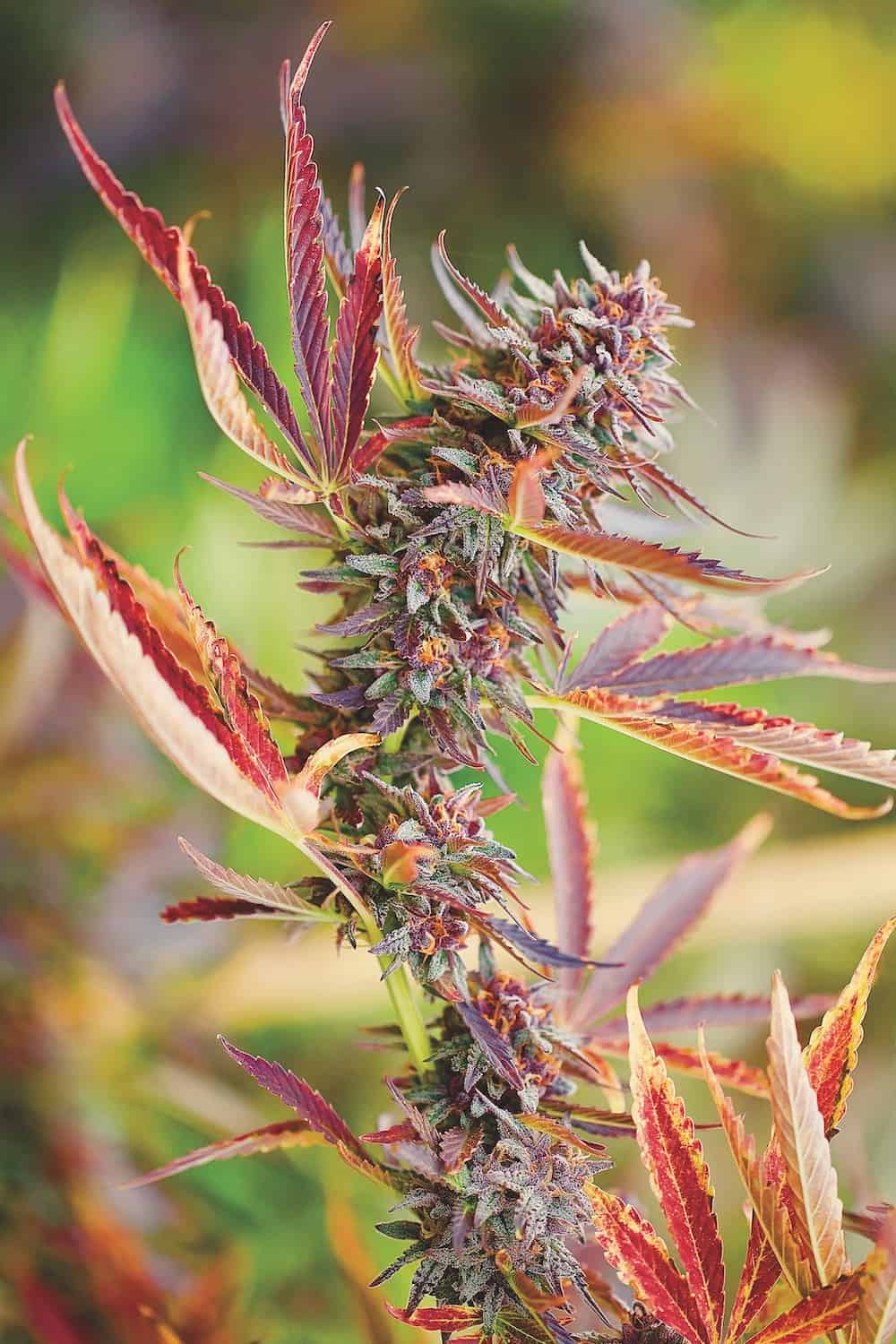
Hindu Kush: Clone-only landrace indica. Flowering time: 8-9 weeks, 21% THC, 0.13% CBD, 3.1% terpene total; David Goodman/ High Times
In Terpenes We Trust
Puffin Farm has developed a reputation for producing recreational varieties treasured for their rich and intoxicating aromas and flavors. “We grow the highest quality with the most flavor,” Short stated. “We’re not necessarily driven by the highest THC content or the biggest yield or the commercially easy strains. It’s more about the terpenes. ‘In Terpenes We Trust’ is our motto.”
He’s not kidding. Puffin Farm recently took 11 top awards at Terpestival, a terpene festival and competition. But in addition to Tangerine, Lemon OG and Puffin’s coveted Hindu Kush—among many other recreational strains—the farm has also made a lot of headway in coming up with several very effective medicinal CBD varieties. Stefano explained: “We had been on a strain hunt for CBD, which we had been learning a lot about, and realized there was a real need for CBD cannabis in the market. So we started growing seeds out from a bunch of different CBD-rich cultivars and testing the flower and searching for strong CBD phenotypes. In that process, we came across three or four amazing ones that we have kept growing and they’re truly wonderful!”
And the medicinal efficacy of Puffin Farm’s cannabis is self-evident. “There’s a patient in Washington State who has intractable seizures and who was having multiple seizures a day that were not being controlled with pharmaceutical drugs,” Stefano explained. “The patient found one of the cultivars that we grow, the Remedy, in our clients’ retail stores in Seattle. It is one of only two strains that completely stopped the seizures.
“I hear stories like this about our CBD strains and I’m humbled,” Stefano continued. “I get emails all the time from patients about another strain we grow called Dancehall. It’s a 20:1 CBD to THC as well. These people may have anxiety and pain and are suffering terribly, and they find this strain and it changes their lives and makes them functional again. Stories like this about our CBD products just blow my mind.”
The conversation lightened up as Stefano hit the kitchen to whip up a huge salad and a big pot of pasta with home-made marinara sauce, her own version of her family’s traditional recipe. She often prepares an impromptu lunch for everyone on the farm. As she cooked, she mused: “You know, it’s gratifying to know that our customers appreciate quality as much as we do. It’s funny… We’ve run some numbers and so far we’ve gotten over a million people high—and counting.”
Article excerpted from the forthcoming book A Year in the Life of Puffin Farm, by David Goodman.
This feature was published in the August 2018 issue of High Times magazine. Subscribe right here.
The post The Organic Terroir of Puffin Farm appeared first on High Times.




0 DL LiNKS:
Post a Comment
Add yours...